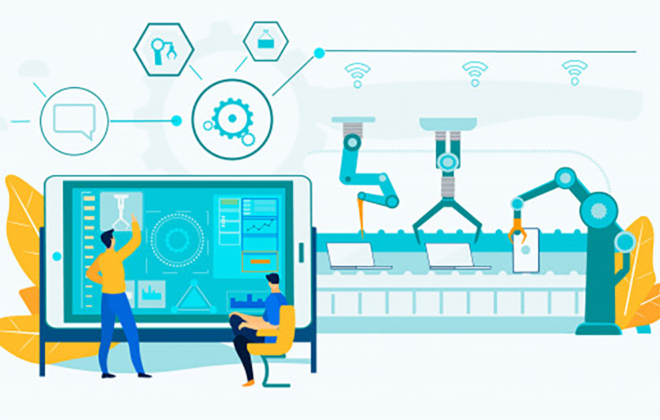Silver Lining: How COVID-19 is Leading Staffing Industry into Future?
From speculating work-from-home trends to contributing to it, a lot has changed in a matter of months. Today all the workforce has gone virtual, whereas earlier only 3.4% of the U.S population participated in the remote workforce.
But these numbers have dramatically multiplied in the last one month during the COVID-19 crisis.
As per the recently released report, Microsoft Teams – communication and collaboration platform – marked a record high of 2.7 billion virtual meeting minutes on March 31, 2020. A whopping 200 percent increase from 900 million, registered on March 16, 2020 – when the gravity of the outbreak was yet in speculation.
![]()
The virtual shift is enormous and almost every industry is struggling to adapt and adjust to it. But amid all the uncertainties, technology has certainly come out as a winner.
Be it accessing all the office data, disseminating information, connecting to co-workers or tracing COVID data points, in these catastrophic times technology rose to the occasion and prevented the economy from falling flat on the face.
However, fitting into the new, technology-driven work culture was easier for some industries than others. Companies with basic remote work policies and task tracking tools already in place had a lot less on their plates to handle than the ones building the entire remote work infrastructure from scratch.
Staffing Industry: Stuck in the Middle of Technology Adoption Curve
Leisurely adapting technology, yet not a sluggard, staffing industry lied in the middle of the technology adoption curve before the pandemic. It had basic tech tools and measures in place to handle light industries. Yet, it wasn’t completely ready for this virtual transition.
Best described by Peter Reagan, Senior Director of Contingent Workforce Strategies & Research, SIA, before COVID-19, the staffing industry was stuck in the middle of the adoption gap on its way to the early majority phase in the typical technology adoption curve ranging from Innovators to Early Majority to Laggards.
‘Innovators’ are generally the first ones to try new technologies followed by ‘Early Adopters’. In most cases, these are the tech giants leading the tech trends. Except for tech pioneers, majority of businesses lie in the last three groups, ‘Early Majority’, ‘Late Majority’ and ‘Laggards’.
![]()
According to Peter’s prediction, staffing industry would have taken a minimum of five years to fully enter the early adapter phase. But the emergence of COVID-19 upturned all the trends and forecasts beyond expectations.
Propelled by pandemic impacts, staffing industry will now experience an unforeseen jump in the tech adoption curve. As a result, it will enter the phase of early adopters sooner than expected.
Outcomes that would have taken years to shape are now just a matter of months. The last two months have already transformed the functioning of the talent industry and the upcoming 12 months is set to further accelerate the process. Doing the years of works in months.
Factors Leading to the Silver Lining
Bridging the early adopter and early majority gap wouldn’t have been speedy under normal circumstances. But, COVID-19 is no normal situation. The extraordinary emergence and urgency of COVID-19 brought along a silver lining – speedy technological advancement and adoption – for the staffing industry.
Finding the silver lining was pushed by the need for survival. But, unexpectedly now this survival need is giving the much-needed acceleration to the staffing industry. In this unplanned scheme of sudden and rapid tech acceleration, the staffing industry will experience three major impacts which will set the staffing industry on a steep upward growth of tech.
1. Work from Home Setup
Many studies are suggesting that COVID-19 will change how we work permanently. And remote work culture might become the new norm. During the pandemic, companies have deftly experimented with the remote work culture. And majority of them are poised to adopt this new work culture once the dust settles.
![]()
Staffing industry being no exception will also adapt to this working culture and adjust to thrive into the new norm. Considering we are a few months away from normalcy, the staffing industry will utilize this time to equip its infrastructure and methodologies to completely embrace the remote culture.
Read More: How Organizations Can Prepare for Remote Work During Coronavirus Outbreak
2. Adapting Tech Tools
Technology has proved to be a life savior in these tumultuous times. From VPN, remote working tools, video conferencing, task tracking to conducting online conferences and developing healthcare solutions, technology has been at the forefront of all business, healthcare and personal activities.
This renewed importance of technology will thrust the staffing industry to adopt newer tech tools. Facilitating video interviews, conducting virtual onboarding and more, it will open the avenues for a new style of operation. Pushing staffing companies to function in a virtual yet collaborative environment.
3. Breaking Down IT Infrastructure Barriers
To keep the economy flowing, businesses are breaking down the IT infrastructural barriers. These barriers previously prevented the widespread adoption of the remote workforce model.
More and more companies are now focusing on revamping all their key operations around IT infrastructure. Staffing companies are also revamping and expanding their IT infrastructure, unifying siloed processes and bringing in new work portfolios.
For instance, currently, staffing companies have a condensed IT support team. However, they will now have to increase the quality and quantity of the IT resources to keep pace. This remodeling will not only strengthen the grip on existing IT infrastructure but will also introduce new technologies in the existing processes.
Summing it Up
In hindsight, COVID-19 will prove to be a tipping point for the technological adoptions and advancements.
While all the staffing trends and predictions have turned upside down. Yet, once this all ends the staffing industry will be in a much better place to harness technology and transition into a new and advanced work culture.
Related Posts
Subscribe For Updates
Categories
- Accountant
- AI
- Automation
- Awards and Recognitions
- Blue Collar Staffing
- Burnouts
- Campus Recruiting
- Cloud
- Co-Ops agreements
- Company Culture
- Compliance
- contingent workforce
- Contingent Workforce
- COVID-19
- Cyber Security Staffing
- Data Strategy
- Digital Transformation
- direct sourcing
- Distributed Workforce
- Diversity
- Diversity & Inclusion
- Economy
- Events & Conferences
- fleet industry
- Gig Economy
- Girls in Tech
- Global Talent Research and Staffing
- Government
- Healthcare
- Healthcare Staffing
- Hiring Process
- Hiring Trends
- Home Helathcare
- HR
- HR Practices
- HR Tech
- IT
- Labor Shortages
- Life Science
- Local Governments
- News
- Nursing
- Payroll Staffing
- Public Sectors
- Recruiting
- Remote Work
- Skill Gap
- SMB Hiring
- Snowflake
- Staffing
- Staffing Augmentation
- Staffing Challenges
- Talent ROI
- Tech Staffing
- Technology
- Tips & tricks
- Total Talent Management
- UI/UX Design
- Uncategorized
- Veteran Staffing
- Veterans Hiring
- Veterans Hiring
- Workforce Management
Recent Posts
- Automation in Recruiting: From Chatbots to Predictive Screening
- Gig Economy Expansion: The Impact on Talent Pools and Business Models
- Skills-Based Hiring: Why Credentials Alone Don’t Cut It in 2025
- Procurement 3.0: AI & Intelligent Automation in 2025
- Q3 Is Here: Is Your Contingent Workforce Strategy Falling Behind?
Newsletter
Archive
- September 2025
- August 2025
- June 2025
- April 2025
- March 2025
- December 2024
- November 2024
- October 2024
- September 2024
- August 2024
- July 2024
- June 2024
- May 2024
- April 2024
- March 2024
- February 2024
- January 2024
- December 2023
- November 2023
- October 2023
- September 2023
- August 2023
- July 2023
- June 2023
- May 2023
- April 2023
- March 2023
- February 2023
- December 2022
- November 2022
- October 2022
- September 2022
- August 2022
- July 2022
- June 2022
- November 2021
- October 2021
- September 2021
- August 2021
- July 2021
- June 2021
- May 2021
- April 2021
- March 2021
- February 2021
- January 2021
- December 2020
- November 2020
- October 2020
- September 2020
- August 2020
- July 2020
- June 2020
- May 2020
- April 2020
- March 2020
- February 2020
- January 2020
- December 2019
- November 2019
- October 2019
- September 2019
- August 2019
- July 2019
- June 2019
- May 2019
- January 2019
- December 2018
- November 2018
- October 2018
- September 2018
- August 2018
- July 2018
- June 2018
- May 2018
- April 2018
- March 2018
- February 2018
- January 2018
- December 2017
- November 2017
- October 2017
- September 2017
- August 2017
- July 2017
- June 2017
- May 2017
- November 2016
- October 2016




